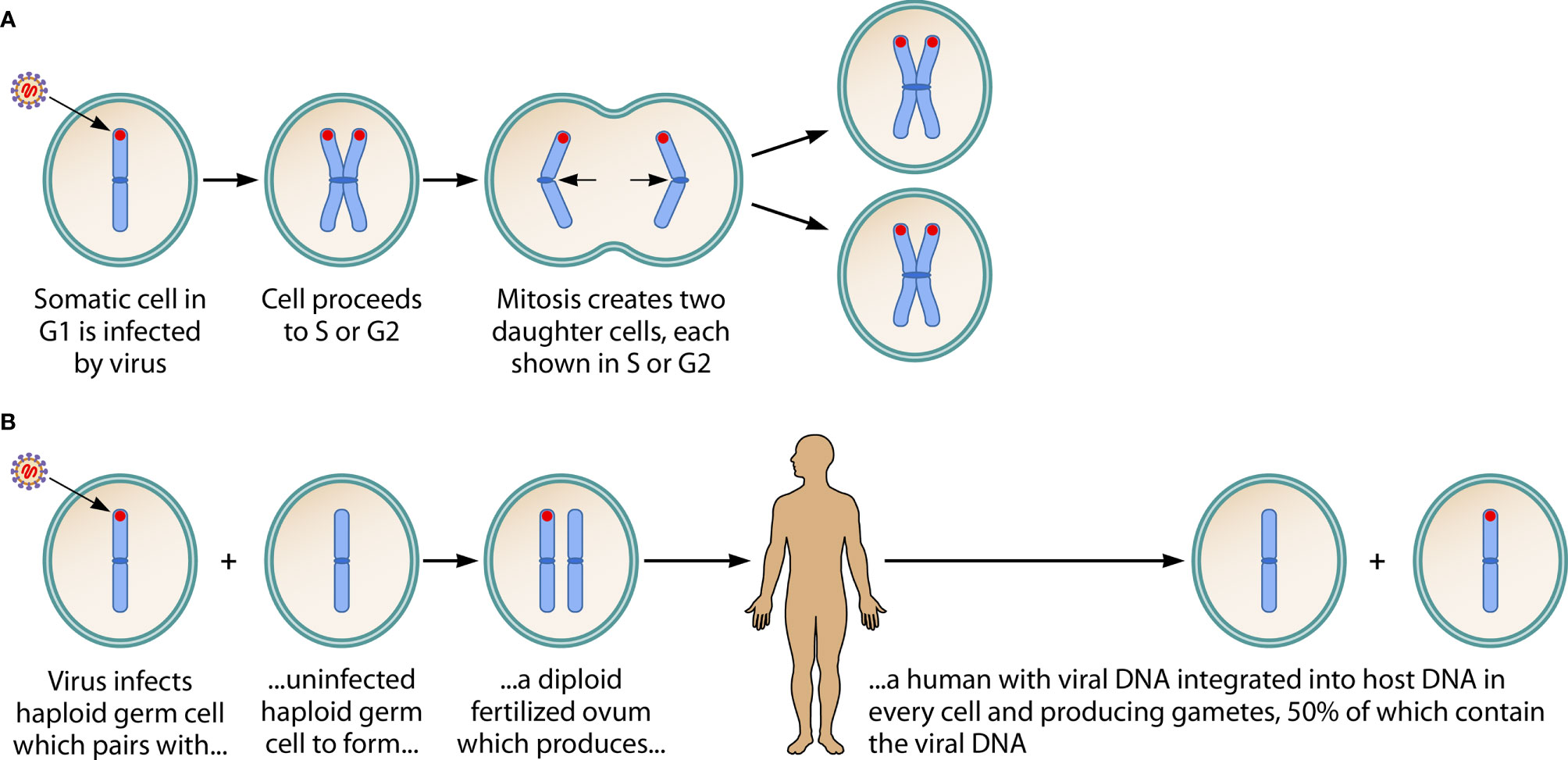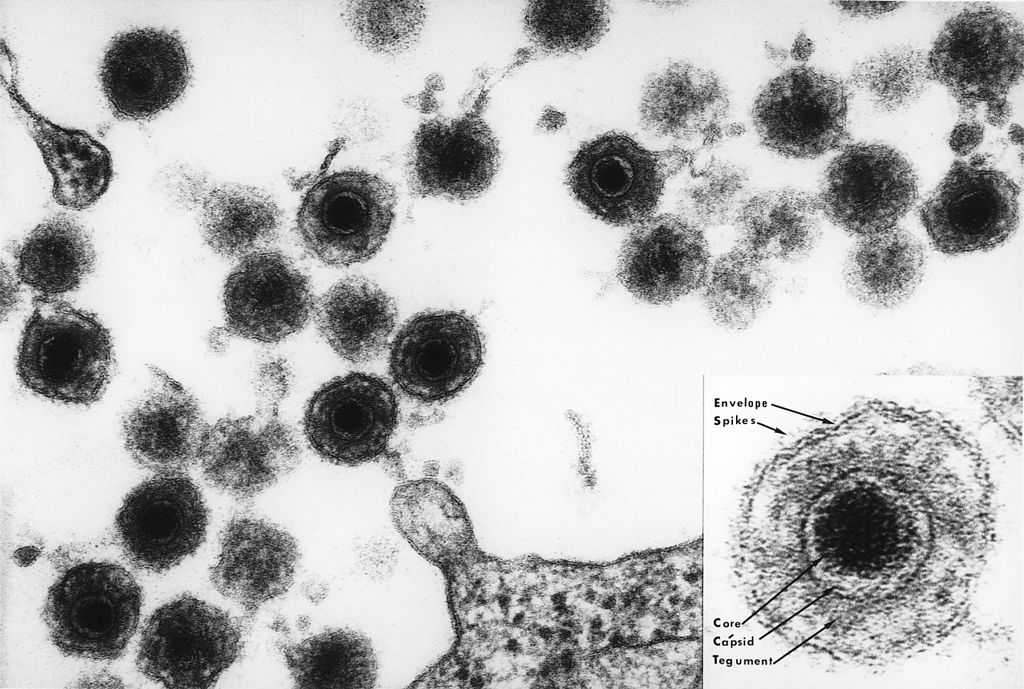Human Herpesvirus 6 Hhv 6 Has the Following Characteristics Except
Abstract Background Human herpesvirus 6 HHV-6 is a recently discovered virus that on the basis of serologic evidence appears to infect most children by. Most children have been infected by age three.

Schematic Representation Of The Hhv 6 Lytic Replication Cycle The Download Scientific Diagram
It is a very rare form.

. Over 2 to 5 years 2716 children and 149 families were studied. Human herpes virus-6 HHV-6 infects 90100 of individuals during early childhood1 HHV-6A and HHV-6B differ in their genomes biological and immunological characteristics epidemiology and association with diseases2 Infection or reactivation is well described in the immunocompromised host population3 Reactivation occurs in up to 50 of allogeneic. Another manifestation of HHV-6 is myelitis which has not been fully evaluated.
Human herpesvirus 6 HHV-6 is a ubiquitous pathogen of the betaherpesvirinae family with a nearly 90 seroprevalence rate in healthy adults1 2. Roseola occurs most often in children aged 6 to 24 months. Roseola also called exanthem subitum and sixth disease is a common contagious viral infection caused by the human herpesvirus HHV 6.
416 - 418 Web of Science. Human Herpes Virus 6 PCR. Typically it causes a 3-day fever followed by a 2-day full body rash.
Transmitted by saliva and certain organ transplants. The protein encoded by the U69 open reading frame ORF of human herpesvirus 6 HHV-6 has been predicted to be a protein kinase. These closely related viruses are two of the nine known human herpesviruses herpesviruses that have humans as their primary host.
A rash appears on the fourth day. Appears as a mononucleosis-like illness in adults D. A positive test typically means that a person has been infected in.
Starts with a high feverB. It causes roseola in infants. Causes Kaposis sarcoma E.
Appears as a mononucleosis-like illness in adultsD. Peripheral blood mononuclear cell PBMC saliva and cerebrospinal fluid CSF specimens were examined for HHV-6 DNA and variant. It is a very rare form of herpesvirus.
Human herpesvirus-6 HHV-6 is a major cause of limbic encephalitis with a dismal prognosis after allogeneic hematopoietic SCT HSCT. SmartBook Access Card for Microbiology Fundamentals 1st Edition Edit edition Solutions for Chapter 16 Problem 30MCQ. After allogeneic hematopoietic stem cell transplantation HSCT human herpesvirus-6 HHV-6 can cause serious central nervous system CNS disorder and typically presents as encephalitis.
Youngsters typically have a high fever. The acute infection in children is characterized clinically by an acute febrile illness irritability inflammation of tympanic membranes and uncommonly a rash characteristic of roseola. Like other members of this family the virus remains in a latent state after primary infection has resolved and can reactivate.
This strain of the herpes virus is different than the one that causes cold sores or genital herpes infections. Replicates in T lymphocytes macrophages and salivary gland tissue B. Human herpesvirus 6 HHV-6 is the common collective name for human betaherpesvirus 6A HHV-6A and human betaherpesvirus 6B HHV-6B.
Human Herpes Virus 6 PCR. Causes roseola in infants and young childrenC. Human herpesvirus 6 HHV-6 has the following characteristics except.
This Human Herpesvirus 6 test looks for IgG antibodies which typically develop a few weeks after infection and can persist for the rest of a persons life. Human herpesvirus 6 HHV-6 has the following characteristics except A. Human herpesvirus 6 HHV-6 and human herpesvirus 7 HHV-7 are relatively recently discovered beta-herpesvirus.
Human herpesvirus 6 HHV-6 is a member of the Herpesviridae family. This test is intended to be used as an aid in the diagnosis of infection with human herpesvirus 6 HHV-6. It replicates in T lymphocytes macrophages and salivary gland tissue.
Before kindergarten approximately 90 of children become infected with human herpesvirus 6 HHV-6 more commonly known as sixth disease or roseola. HHV-6 species are divided into two variants. Human herpesvirus 6 HHV-6 has the following characteristics except.
Real-time polymerase chain reaction PCR LOINC Map. HHV-6 establishes lifelong latency after the initial productive infection but unique among different human herpesviruses HHV-6 has the ability to integrate into human chromosomes3 4. Little information is known about the clinical charac.
They are genetically related to cytomegalovirus and like other members of this family they remain indefinitely in infected individuals1 Two forms of HHV-6 were identified initially. Both human herpesvirus 6 HHV-6 and human herpesvirus 7 HHV-7 belong to the Herpesviridae family Betaherpesvirinae subfamily constituting the Roseolovirus genus. JSTOR is a digital library of academic journals books and primary sources.
Primary infection of HHV-6 has been associated with exanthem subitum and febrile illness. HHV-6 and HHV-7 belong to the Roseolovirus genus of the ß-herpesvirus subfamily. The virion particle is 160 nm to 200 nm and has the morphologic features typical of herpes virion particles a central core containing the viral DNA a 90-nm to 110-nm capsid and a tegument layer surrounded by a membrane.
HHV-6A and HHV-6B are double-stranded DNA viruses within the Betaherpesvirinae subfamily and of. A starts with a high fever B causes roseola in infants and young children C appears as a mononucleosis-like illness in adults D a rash appears on the fourth day E it is a very rare form of herpesvirus. Human herpesvirus 6 HHV-6 has recently been identified as the agent associated with both pediatric and adult infections.
Human herpesvirus-6 HHV-6 could reactivate under immunosuppressive conditions after allogeneic hematopoietic stem cell transplantation HSCT and has the potential to. HHV-6 has been linked to a number of conditions including Multiples Sclerosis Viral Hepatitis Epilepsy Chronic Fatigue Syndrome Encephalitis and Lung disease. Human herpesvirus 6 HHV-6 has the following characteristics exceptA.
Then like most herpes viruses the symptoms clear and the virus enters a state of latency. J Clin Microbiol 1993 31. They are prevalent in the human population.
Order Code Order Code Name Order Loinc Result Code Result Code Name UofM Result LOINC. A rash appears on the fourth dayE. Starts with a high fever.
Human herpesvirus 6 HHV-6 variant B accounts for the majority of symptomatic primary HHV-6 infections in a population of US. Human herpesvirus 6 HHV-6 has the following characteristics except _____. A prospective multicenter study was.
Causes roseola in infants C. HHV-6 encephalomyelitis is an uncommon. Causes roseola in infants and young children.
Little is known of the persistence and pathogenicity of human herpesvirus 6 HHV-6 after primary infection including the role of strain variant. To investigate its functional properties we have expressed the U69 ORFs from both HHV-6 variants A and B by using recombinant baculoviruses BV6AU69 and BV6BU69. Appears as a mononucleosis-like illness in adults.

Pdf Molecular Biology And Clinical Associations Of Roseoloviruses Human Herpesvirus 6 And Human Herpesvirus 7 Semantic Scholar

Introduction To Human Herpesviruses Hhv Youtube

Frontiers Human Herpesviruses 6a And 6b In Reproductive Diseases Immunology

Herpesviruses Topics Large Enveloped Ds Dna Viruses Hhv1 8 Major Pathogens Include Hsv 1 2 Vzv Cmv Ebv Cause Productive Latent Infections Latent Ppt Download

Human Herpesvirus 6 7 Concise Medical Knowledge

Pdf The Effect Of Human Herpesvirus 6 Hhv 6 On Cultured Human Neural Cells Oligodendrocytes And Microglia

Pdf Case Report And Literature Review Hhv 6 Associated Meningoencephalitis In An Immunocompetent Adult

Pdf Identification Of Human Herpesvirus 6 Latency Associated Transcripts

References In Relationship Among Human Herpesvirus 6 Reactivation Serum Interleukin 10 Levels And Rash Graft Versus Host Disease After Allogeneic Stem Cell Transplantation Journal Of The American Academy Of Dermatology

Herpes Simplex Virus Human Herpesvirus 6 Human Herpesvirus 8 And Download Table

Pdf Co Infections Of Human Herpesviruses Cmv Hhv 6 Hhv 7 And Ebv In Non Transplant Acute Leukemia Patients Undergoing Chemotherapy

Pdf Differential Tropism Of Human Herpesvirus 6 Hhv 6 Variants And Induction Of Latency By Hhv 6a In Oligodendrocytes

Human Herpesvirus 6 Encephalitis In Immunocompetent And Immunocompromised Hosts Neurology Neuroimmunology Neuroinflammation

Pdf The Secret Lives Of Human Herpes Virus 6 Hhv 6

Pdf Human Herpesvirus 6 Associated Encephalitis With Fulminant Brain Edema In A Previously Healthy Child

Pathological Findings Of Skin Biopsy Specimen A He Staining B Download Scientific Diagram
Human Herpesvirus 6 Hhv 6 Virus Infection

Electron Micrographs Of Mature Human Herpesvirus 6a And Human Download Scientific Diagram

Human Herpesvirus 6 Infection As A Trigger Of Multiple Sclerosis An Update Of Recent Literature Bmc Neurology Full Text
Comments
Post a Comment